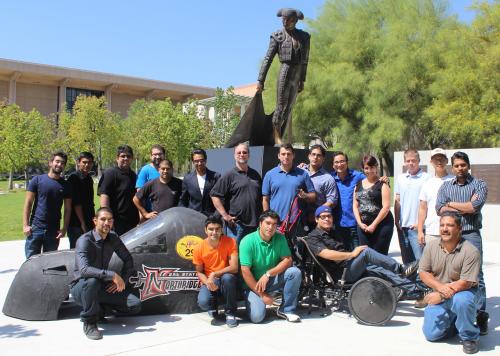It’s a bicycle—or a tricycle—with a difference. Designed according to sound engineering principles for maximum speed, efficiency, practicality and sustainability, it will never be for sale at your local bike shop. But with its emphasis on innovation, it could help influence the next generation of bicycles available to consumers.
Each year, the American Society of Mechanical Engineers sponsors the Human-Powered Vehicle Challenge, spawning countless cutting-edge bicycles and tricycles that student teams from universities around the world have built for the competition. Teams are scored on their design, men’s and women’s speed events, innovation and endurance.
CECS mechanical engineering majors have long been enthusiastic participants in the competition, producing a new design for the HPVC as their senior design project every year. In 2013, the team built a three-wheeled recumbent vehicle designed to balance speed and stability. Out of 29 entries at last April’s HPV Challenge, held at San Jose State University, the CSUN team, which was advised by mechanical engineering professor Robert Ryan, placed seventh in design and ninth overall, landing in the top third of the field.
This year’s CSUN team is already hard at work on their HPV for the next competition, designing a crushable nose section for safety in low-speed impacts and preparing to test their mettle against teams as enthusiastic about human-powered transportation as they are.
